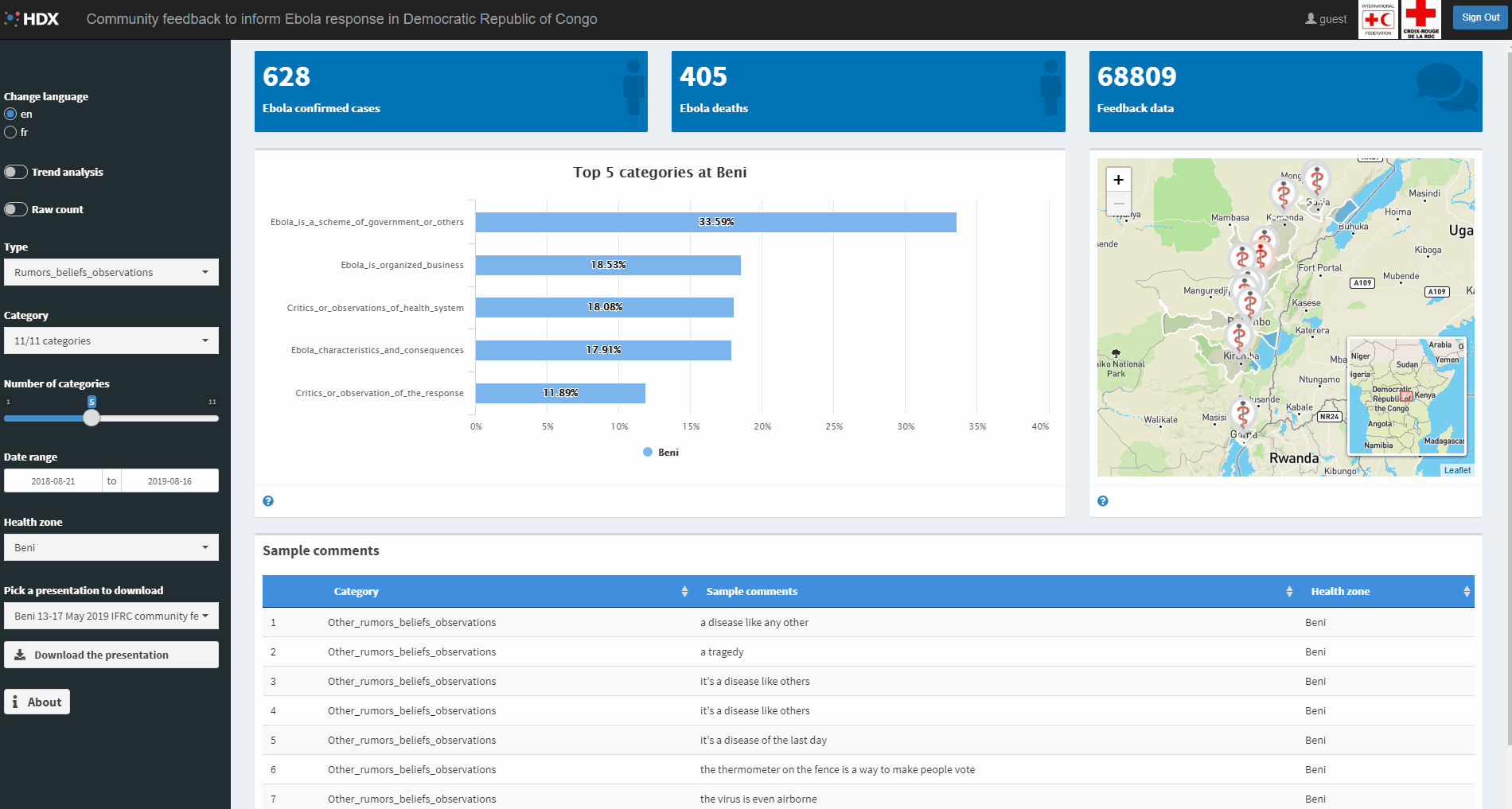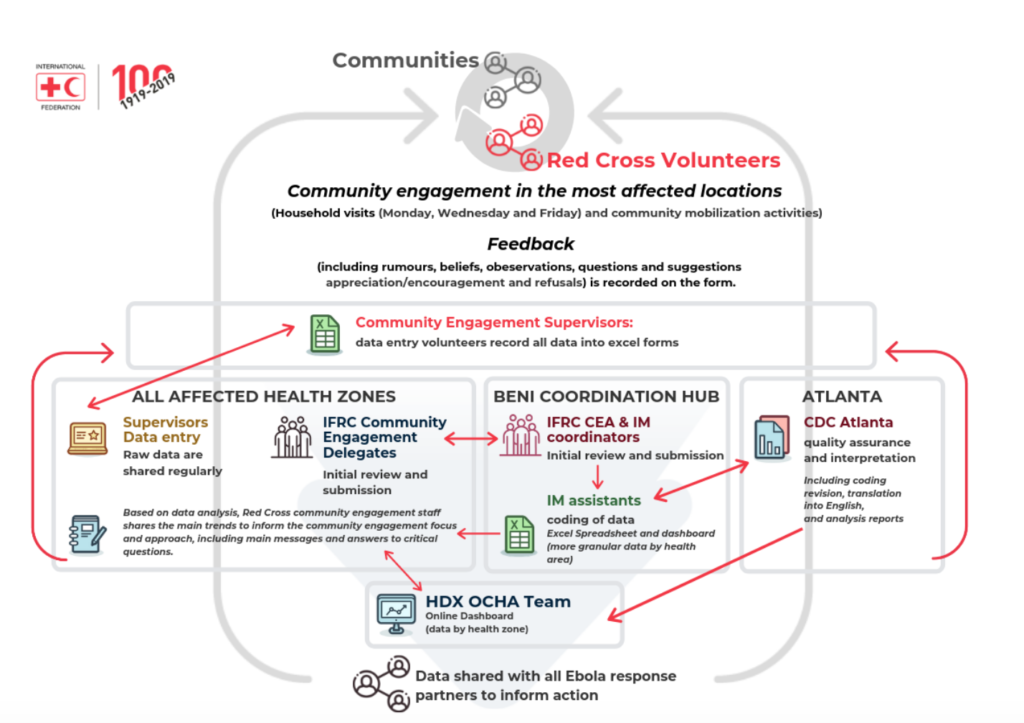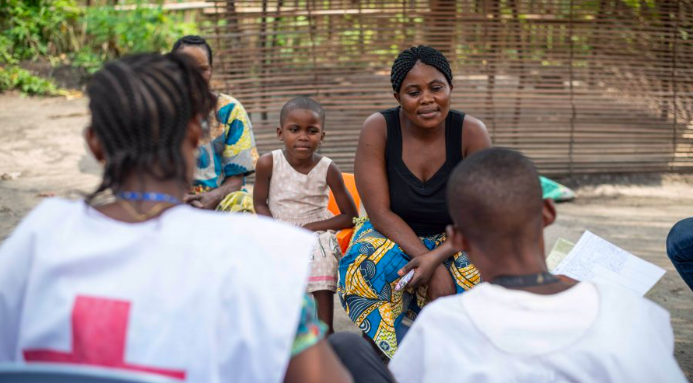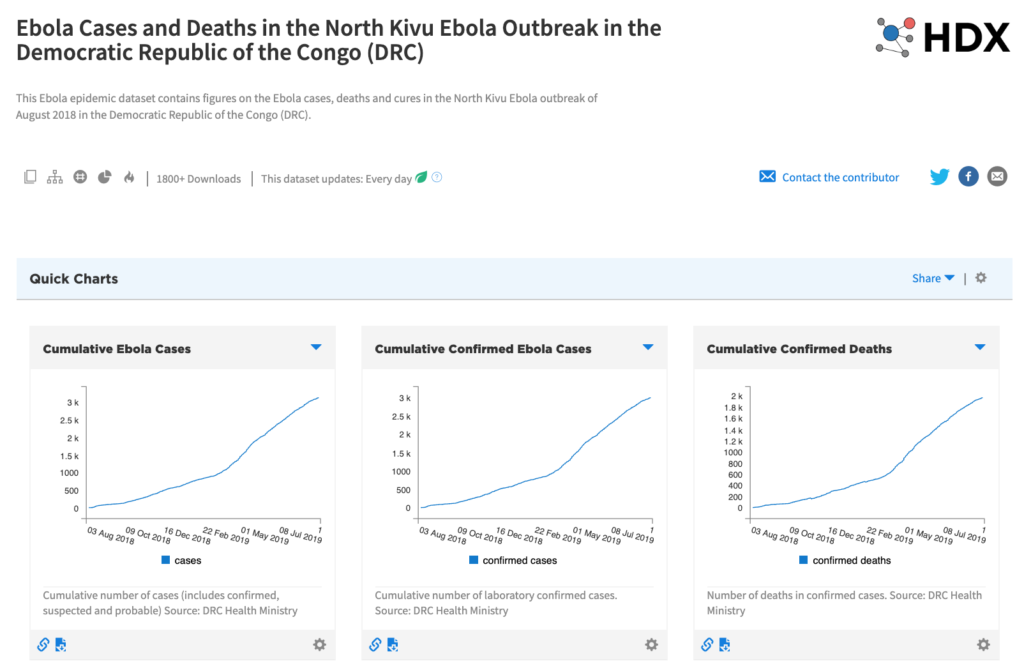Partners:
IFRCCentre Service:
Data ServicesTags:
Summary:
The Democratic Republic of the Congo (DRC) is continuing to deal with a deadly Ebola outbreak, which began in August 2018 and is the worst in the country’s history. With the number of confirmed cases around 3,000 as of September 2019, it is now the second-largest Ebola epidemic ever recorded, behind the West Africa outbreak of 2014-2016. The outbreak is centred in the northeast of the country, in North Kivu and Ituri provinces, an area where there is violent conflict. The situation is further complicated by significant community resistance, fed by fear, rumors and stigma that can counter efforts to control the outbreak.
The International Federation of Red Cross and Red Crescent Societies (IFRC) partnered with the Centre to better understand data on community perception of the outbreak. The Centre’s HDX team developed a dashboard that brought all of the data together and made it easy for global and local responders to see the trends in beliefs, rumors, questions, suggestions and concerns in each of the affected health zones. Given the sensitive nature of the data, the dashboard is private but the image below provides a sense of the insights and functionality.

Challenge:
Misinformation, mistrust of outsiders and conspiracy theories have spread quickly across Ebola affected areas of DRC. In order to respond to community resistance and improve the response based on people’s concerns, an innovative community feedback system was launched by the IFRC. The IFRC understood from experience that Ebola provokes fear in communities due to the severity of the symptoms, misunderstanding of the causes, the high number of deaths and control measures that are often perceived as intrusive and interfering with local social, cultural and religious practices.
In August 2018, hundreds of Red Cross volunteers began household visits focused on health promotion in the most affected areas in North Kivu and Ituri. During this process, feedback on the Ebola response was captured by volunteers using paper forms. Additional information was gathered at community events and through listening to radio programmes where Ebola was being discussed. The results ultimately contained thousands of statements from local community members in English and French.
The IFRC wanted to ensure that this local feedback was used to inform the strategy to contain the outbreak and deploy targeted information campaigns. A workflow was established to turn the unstructured text into insight for decision makers. The IFRC worked with the US Centers for Disease Control and Prevention (CDC) to process the information, ensure data quality, and interpret the results so that they could be analyzed and visualized. The goal is for responders to understand the best approaches for biomedical interventions and when needed, adapt these to better address community concerns and expectations. (See process diagram below).

Centre action:
The Centre’s HDX team came in towards the end of the data process to design and deploy a secure, password-protected dashboard to explore the results. Together with the CDC, the Red Cross team analyzed the data to identify categories of information and useful insights that could be visualized in meaningful ways. After some back and forth on a prototype mock-up, the Centre built the custom dashboard using Shiny, an open source package for creating interactive web visualizations.
The dashboard has four sections: key figures for Ebola cases and deaths as well as the total number of feedback data points (over 350,000 as of August 2019); interactive trend lines and bar charts showing categories of feedback; a map of the affected health zones; and a list of sample comments from community members. Users can select which health zones to view, and can explore the feedback in French or English.
The dashboard was finalized in January 2019, and since then, the Centre has continued to update it as often as required by IFRC. Improvements have been made to the interface so that it is easier to filter data and perform trend analysis. The Centre usually only develops custom visuals for partners based on data that is publicly available on HDX. In this case, we made an exception given the urgency of the Ebola response and our long-standing, trusted partnership with IFRC.
Outcome:
Although the Ebola outbreak continues to affect communities in DRC, this collaborative approach to gathering, analysing and visualizing community feedback data has further strengthened humanitarian partnerships and prompted the development of useful tools. The dashboard is used by IFRC to understand community feedback about the Ebola outbreak and to contain the spread of misinformation in a critical response environment. New community perception data can be combined with past data to see trends over the year and to identify potential correlations between events and the sentiment of people in that area.

Conclusion:
The Ebola dashboard project is the latest collaboration between the IFRC and the Centre. We have previously worked together on data skills training (in Dakar, Doha, and Nairobi) and data sharing. The IFRC and several local societies share their datasets through HDX. Explore this data through the IFRC organization pages or by searching ‘red cross red crescent’ on HDX. The data on Ebola cases and deaths in the North Kivu can be found here.

HDX
